The inconspicuous shepherd's purse not only enriches every garden with its pretty seeds, but also harbors almost forgotten healing effects.
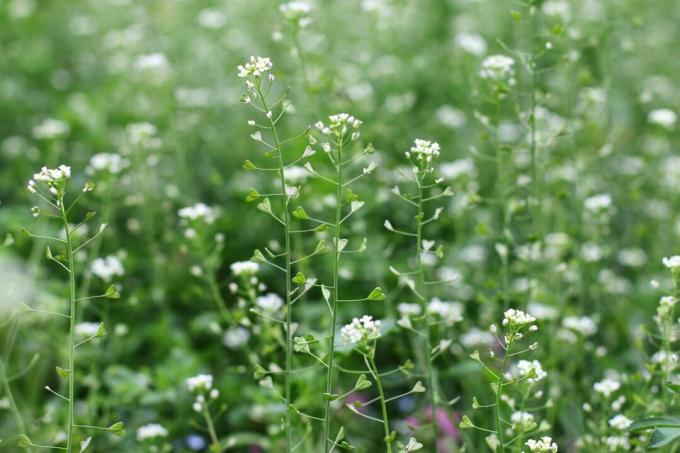
The frugal shepherd's purse is easy to sow and care for and is therefore also suitable for gardening beginners. Here you can find out how planting and care works best and how the shepherd's purse can be processed and used.
Contents
-
Shepherd's purse: origin and characteristics
- Risk of confusion with shepherd's purse
- Shepherd's purse as a pointer plant
- Fight shepherd's purse as a weed?
- plants and care
- Effect and use of shepherd's purse
- Is shepherd's purse edible?
Shepherd's purse: origin and characteristics
shepherd's purse (Capsella bursa pastoris), also known as common shepherd's purse, shepherd's purse or goose cress, belongs to the cruciferous family (Brassicaceae). It owes its botanical name to the appearance of the heart-shaped pods - Capsella means "little capsule" and bursa-pastoris means "the shepherd's little bag".
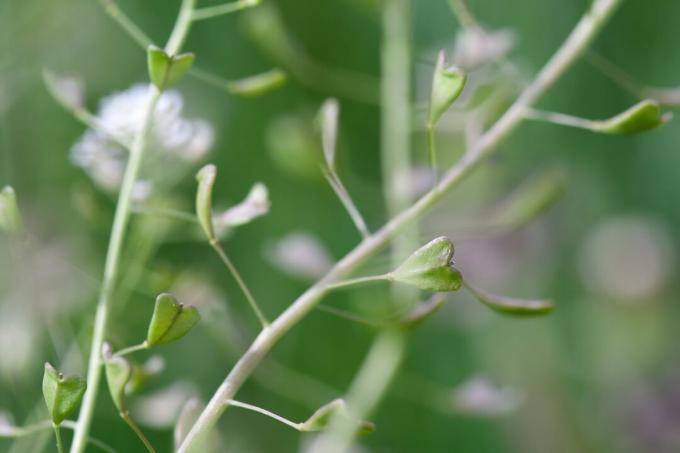
The origin of the shepherd's purse is unclear. However, it is believed to be originally from southern Europe and western Asia. One plant can carry up to 60,000 seeds, so it spreads very successfully. Nowadays you can find it practically everywhere, for example in fields, rubbish dumps, gardens or fallow land. Under ideal conditions, the shepherd's purse reaches a height of 60 cm.
The leaves of the shepherd's purse are oblong, toothed and form a basal rosette, similar to that of the dandelion. The shoot axis protrudes from the center of the leaf rosette and has alternate white flowers. Typically for the cruciferous family, the 4 petals are decussate. The herbaceous plant can be one to a maximum of two years old and is able to fertilize itself. Pollination takes place, among other things, via small bees or hoverflies. Despite its small flowers, the herb is an important food source for insects. The shepherd's purse blooms from May to October.
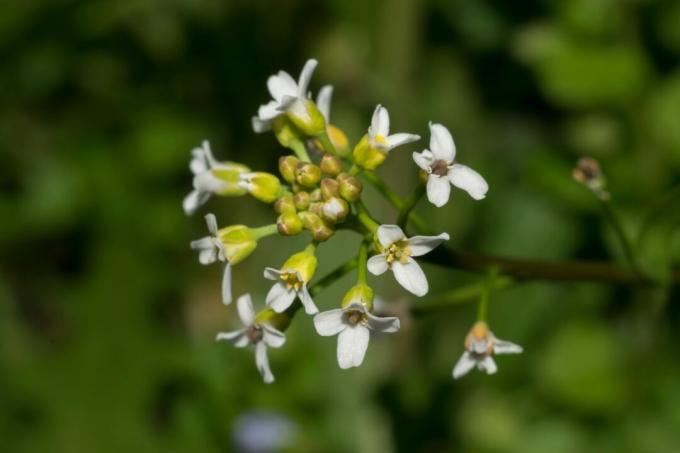
Risk of confusion with shepherd's purse
The field brightener herb (Thalspi arvense), although these are somewhat rounder. Overall, the herb is stronger and its leaves are more serrated. However, one cannot speak of a danger here, since the field pennywort is edible and therefore harmless. Goose cress is colloquially referred to as the cushion plant of the genus Arabis which, however, differs significantly from Capsella bursa-pastoris in its cushion-like growth habit.

Shepherd's purse as a pointer plant
pointer plants indicate certain events. This also applies to the shepherd's purse, which, due to its large occurrence, indicates a soil with a moderate to good nitrogen supply. It can also be assumed that the subsoil is rich in humus. The shepherd's purse also acts as an indicator for overgrazing of pastures. Overgrazing refers to the stress on a pasture that is higher than the regeneration of the plants growing on it, which can lead to the total loss of soil functionality.
Fight shepherd's purse as a weed?
The shepherd's purse is referred to as a weed, especially in the cultivation of rapeseed and cereals, since it can serve as an intermediate host for plant diseases in these plants. When fighting the shepherd's purse, you should make sure that you cut off, pull out or dig up the deep-rooting plant before seed formation. However, the seeds can persist in the soil for decades, which is a regular weeding makes necessary. Other options include flaming the herb or steaming the soil, although these involve more effort and special equipment. In the garden, the shepherd's purse does not compete with other garden plants and can therefore be left standing without hesitation.
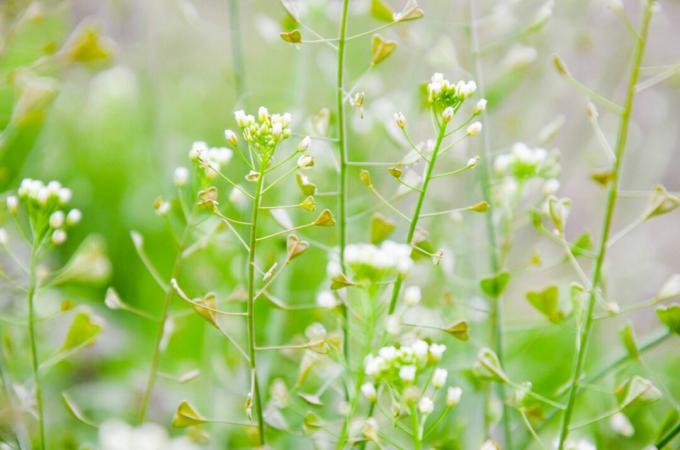
plants and care
The shepherd's purse likes a sunny to partially shaded location in soil rich in nitrogen and humus. If it is not already established in the garden, it can easily be sown. The light germinator is spread over a wide area outdoors from March to April, pressed down a little and germinates within a week. The easy-care herb does not need to be watered or cut. An additional fertilizer is not necessary as long as the soil is at least moderately fertile. Otherwise can with our Plantura organic universal fertilizerbe helped, which provides nitrogen for vital and lush green foliage and for healthy plant growth.

Organic universal fertilizer 1.5 kg
- Ideal for a variety of plants in the garden & on the balcony
- Supports healthy plant growth and active soil life
- Animal-free organic slow-release fertilizer - safe for pets and garden animals
A notice: Due to the deep taproots of the shepherd's purse, which can be several meters long, cultivation in a pot is not recommended, as this usually does not provide the necessary space.
The shepherd's purse is an annual, but easily reproduces itself by the seeds falling to the ground and remaining viable for a few years. If you want to take the propagation into your own hands, the seeds can be collected from April to December. Sowing can take place in the same autumn or in the coming spring. When storing, ensure a cool temperature of around 10°C and dry room air. In addition, the seeds should be kept in an airtight container to protect them from harmful fungi.

Effect and use of shepherd's purse
In folk medicine, the shepherd's purse is said to have a healing effect. It contains flavonoids, potassium, some tannins and is said to have a diuretic, blood-cleansing, haemostatic and blood pressure-regulating effect. Even Hildegard von Bingen wrote about the healing properties of the herb. In homeopathy, the shepherd's purse herb is used, among other things, in the form of globules or capsules. In fact, little research has been done on the healing properties of shepherd's purse herb, although a 2018 study shows that Capsella can relieve heavy menstrual bleeding. Since 2011, Capsella bursa-pastoris has been included in the HMPC monograph, which specifies its use and recommendation in the form of tea and tinctures in women with heavy menstrual bleeding. However, Capsella bursa-pastoris is not recommended during pregnancy as it may induce premature labor.
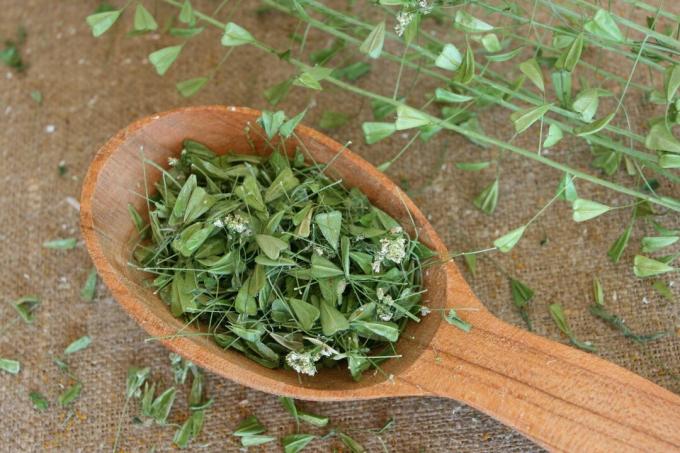
Is shepherd's purse edible?
Yes, the medicinal herb can be eaten raw or processed and is very popular in Asian cuisine. The root of the shepherd's purse, which is still in bloom, is dried upside down and used as a spice. The leaves and seeds of the shepherd's purse taste steamed or raw in a salad. The dried parts of the plant should be processed within 3 months, as they lose their active ingredients if stored for a long time. In terms of taste, the herb can be compared to cress. Only in very large quantities does the shepherd's purse have a slightly toxic effect on people and animals, as it contains essential oils and tannins.
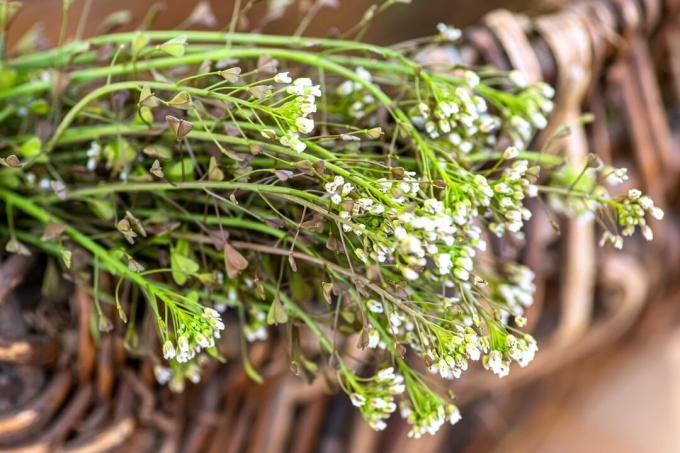
Are you in the mood for edible garden plants? In our article Edible ground cover find out which ground covers not only beautify the garden, but also delight the palate.
Register now for the Garten-Post and receive great tips, seasonal trends and inspiration on everything to do with the garden from our expert every week.


